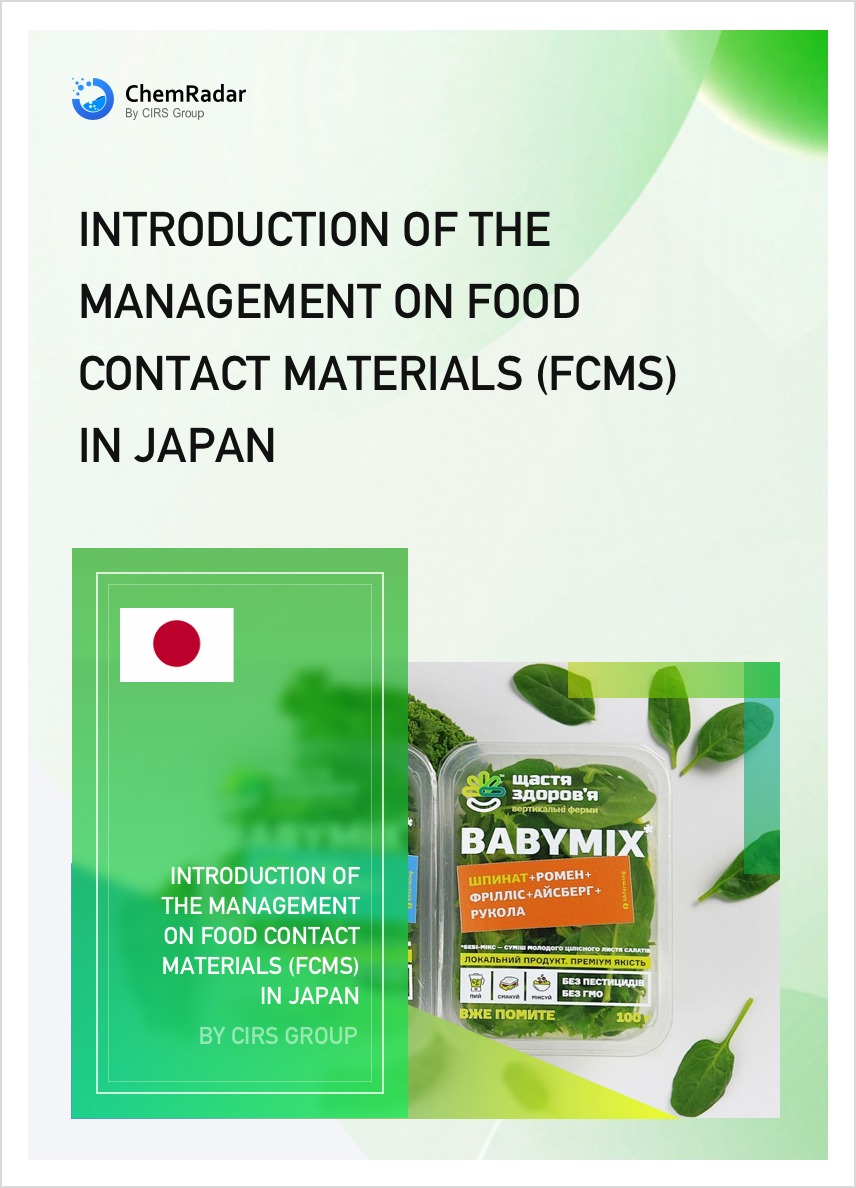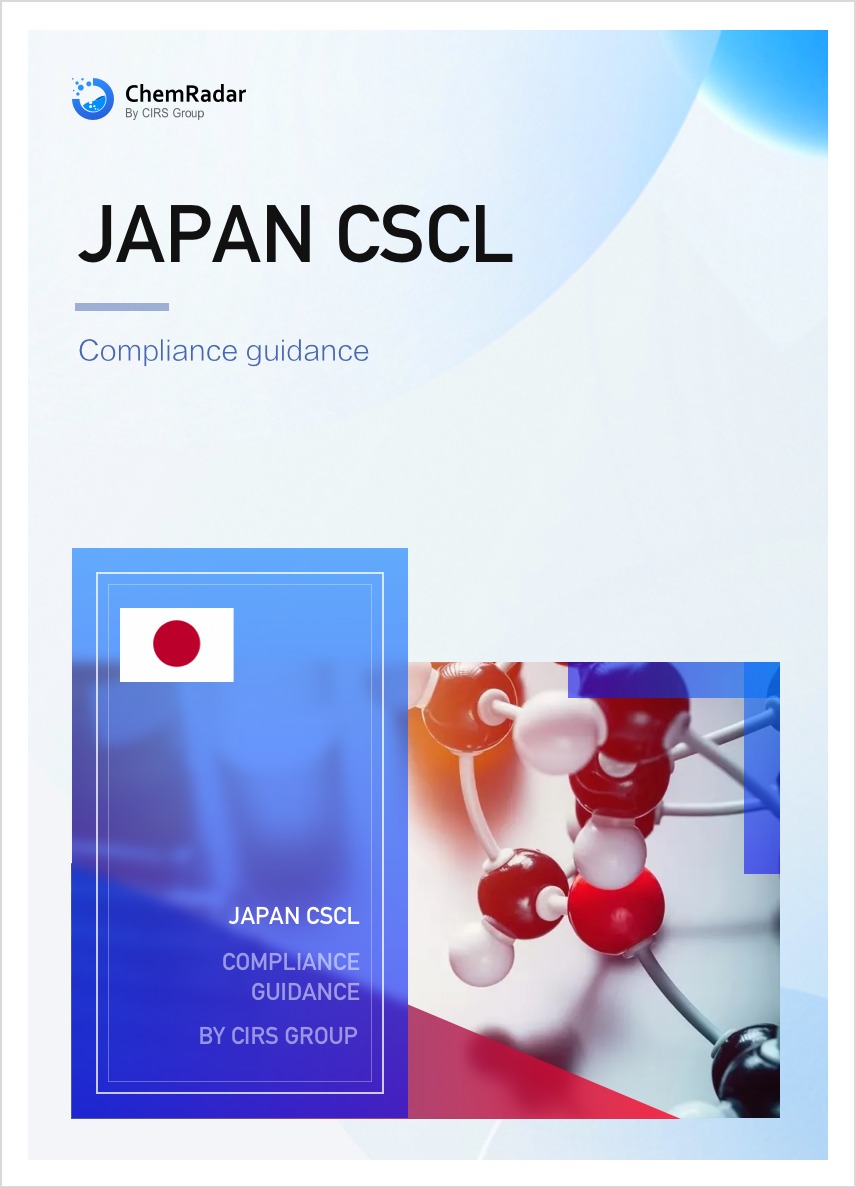Recently, Japan's Ministry of Health, Labour and Welfare (MHLW), Ministry of Economy, Trade and Industry (METI), and Ministry of the Environment (MOE) jointly announced updates to the Priority Assessment Chemical Substances (PACs) list. On March 29, 2024, five substances were deleted from the PACs list, and it was also announced that an additional six chemicals will be subjected to further monitoring. On April 1, 2024, twelve new substances were added to the PACs list.
The PACs list primarily targets the regulation of chemicals that pose potential risks to human health or the environment. These substances require priority review and assessment due to their persistence, bioaccumulation, or toxicity, and potential hazards to environmental or human health. Enterprises shall provide annual chemical reports when the annual import or production volume of these substances exceeds one ton, and importers or producers may need to provide additional hazard data. Currently, the PACs list includes 225 chemicals.

The 12 newly added substances:
| PACs No. | Substance Name |
| 274 | Salt of N,N,N-trimethyl-1-oxiranylmethanaminium |
| 275 | 3-[(2-ethylhexyl)oxy]propane-1,2-diol |
| 276 | 2-(2-butoxyethoxy)ethan-1-ol (also known as diethylene glycol monobutyl ether) |
| 277 | N,N-dimethylacetamide |
| 278 | Ethyl acetate |
| 279 | n-propyl acetate |
| 280 | The reaction product of sodium bisulfite and (chloromethyl)oxirane with N,N-dimethyldodecylamine-1, the main component is 3-(N,N-dimethyldodecylamine-1-amino)-2-hydroxypropane-1-sulfonate (80% or more) |
|
281 |
Potassium octadecenesulfonate or potassium hydrogen octadecenedisulfonate or potassium hydroxyoctadecanesulfonate or dipotassium octadecenedisulfonate |
| 282 | Potassium hydrogen hexadecenedisulfonate or potassium hydroxyhexadecanesulfonate or potassium hexadecenesulfonate or dipotassium hexadecenedisulfonate |
| 283 | Methyl 3-(3,5-di-tert-butyl-4-hydroxyphenyl)propanoate |
| 284 | 3-isocyanatomethyl-3,5,5-trimethylcyclohexyl isocyanate |
| 285 | 1,4-dioxacyclohexadecane-5,16-dione |
According to the risk assessment guidelines for PACs under CSCL, it is necessary to monitor the manufacturing and import volumes of PACs with an annual total of 10 tonnes or less, or emission levels of 1 ton or less. Substances that have been monitored for quantities for three consecutive years and are simultaneously determined to be not harmful to human health or to the ecological environment or flora and fauna can be removed from the PACs list.
The 5 deleted substances:
| PACs No. | Substance Name |
| 9 | Bromomethane (Methyl bromide) |
| 37 | Nitrilotriacetic acid (NTA) |
|
160 |
2-tert-butylamino-4-cyclopropylamino-6-methylthio-1,3,5-triazine |
| 237 | Trioctylamine |
| 243 | Salt of n,n-diethyl-n-methyl-2-[(2-methylprop-2-enoyl)oxy]ethan-1-aminium |
The 6 substances require further monitoring:
| PACs No. | Substance Name | Basis of priority designation |
2019 Annual Report (Actual Situation for 2018) |
2020 Annual Report (Actual Situation for 2019) |
2021 Annual Report (Actual Situation for 2020) |
| 70 | octadecylamine(n-b)triphenylborane |
Impact on human health Impact on the ecosystem |
Manufacturing and import volume below 10 tons | Manufacturing and import volume below 10 tons | |
| 200 | salts of benzyl(dimethyl)(octyl)ammonium | Impact on the ecosystem | - | Emissions below 1 ton | |
| 242 | [dimethyl(octadecyl)azaniumyl]acetate | Impact on the ecosystem | - | Emissions below 1 ton | |
| 246 | ethyl 2-phenylpropanoate | Impact on the ecosystem | - | Emissions below 1 ton | |
| 255 | 4,4'- diamino-3,3'-dichlorodiphenylmethane, (4,4'-methylenebis(2-chloroaniline)) | Impact on human health | - | Emissions below 1 ton | Emissions below 1 ton |
| 256 | mixture of bicyclo[2.2.1]heptane-2,5(or 2,6)-diyl dicyanide | Impact on human health | - | Emissions below 1 ton | Emissions below 1 ton |
ChemRadar has updated latest Priority Assessment Chemical Substances (PACs) List. Click here to search for the latest inventory.




